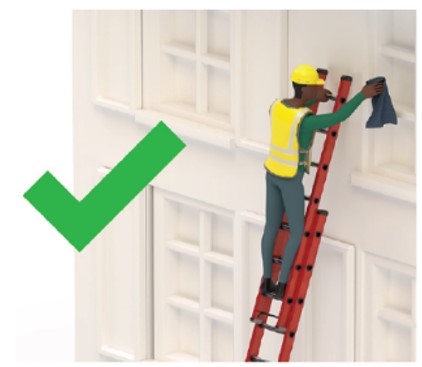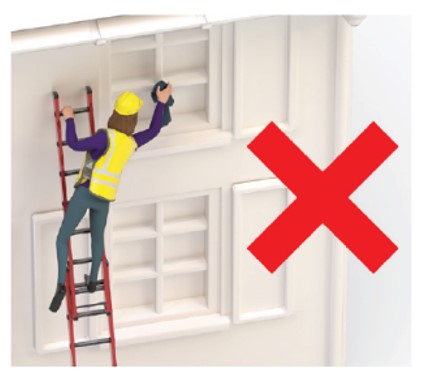Safe Use of Ladders and Stepladders
The Ladder Association, in co-operation with the UK Health and Safety Executive (HSE) has published Guidance Document LA455 on the safe use of ladders and stepladders, found here: https://ladderassociation.org.uk/la455/.
In the UK, falls when working at height remain a common kind of workplace fatality, accounting for around a quarter of all worker deaths and 8% of all non-fatal injuries every year, with many involving a fall off a ladder. It’s essential that people use the right type of ladder for a task and know how to use it safely. The guidance is for employers on the simple, sensible precautions they should take to keep people safe when using portable leaning ladders and stepladders in the workplace. It will also be useful for employees and their representatives.


It covers such areas as:
- When is a ladder the most suitable equipment? “As a guide, if your task would require staying up a leaning ladder or stepladder for more than 30 minutes at a time, it is recommended you use alternative equipment. You should only use ladders in situations where they can be used safely, e.g. where the ladder will be level and stable, and can be secured (where it is reasonably practicable to do so).”
- Who should use a ladder at work?
- Checking your ladder before you use it – make use of pre-use checklists
- Using your ladder safely – simple precautions can minimise the risk of a fall;
- What about the place of work where the ladder will be used – guidance on where a ladder should and should not be used;
- What are the options for securing ladders?
- What about ladders used for access?
- What about the condition of the equipment – ensuring “that any ladder or stepladder is both suitable for the work task and in a safe condition before use. As a guide, only use ladders or stepladders that:
- have no visible defects. They should have a pre-use check each working day;
- have an up-to-date record of the detailed visual inspections carried out regularly by a competent person. These should be done in accordance with the manufacturer’s instructions.
- are suitable for the intended use, i.e. are strong and robust enough for the job;
- have been maintained and stored in accordance with the manufacturer’s instructions.”
Members may wish to refer to:
- Poor condition of on-board equipment [A damaged ladder was observed as in use on the vessel deck during vessel walk around. Further inspection revealed another ladder in similar condition in regular use.]
- Descending Stairs Safely
- Falls from step ladders
- ‘Routine’ task, non-routine result: A fall from a crane ladder leads to an LTI
Safety Event
Published: 12 May 2022
Download: IMCA SF 12/22
IMCA Safety Flashes
Submit a Report
IMCA Safety Flashes summarise key safety matters and incidents, allowing lessons to be more easily learnt for the benefit of all. The effectiveness of the IMCA Safety Flash system depends on Members sharing information and so avoiding repeat incidents. Please consider adding [email protected] to your internal distribution list for safety alerts or manually submitting information on incidents you consider may be relevant. All information is anonymised or sanitised, as appropriate.
IMCA’s store terms and conditions (https://www.imca-int.com/legal-notices/terms/) apply to all downloads from IMCA’s website, including this document.
IMCA makes every effort to ensure the accuracy and reliability of the data contained in the documents it publishes, but IMCA shall not be liable for any guidance and/or recommendation and/or statement herein contained. The information contained in this document does not fulfil or replace any individual’s or Member's legal, regulatory or other duties or obligations in respect of their operations. Individuals and Members remain solely responsible for the safe, lawful and proper conduct of their operations.
